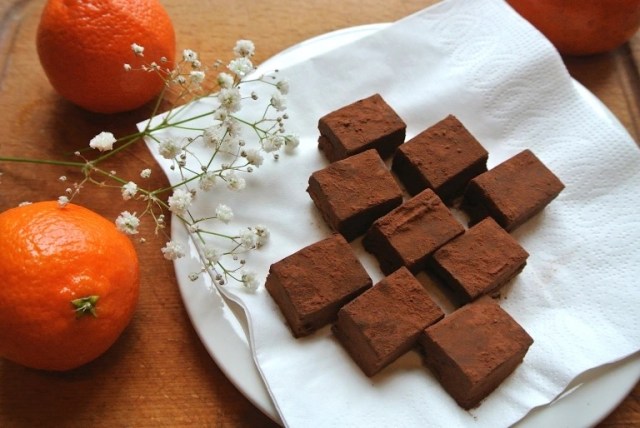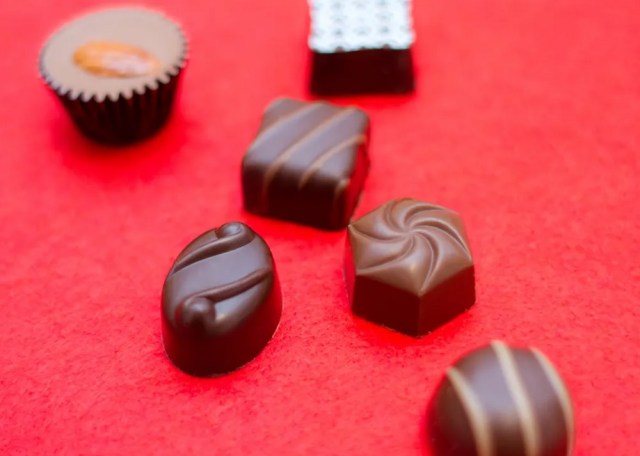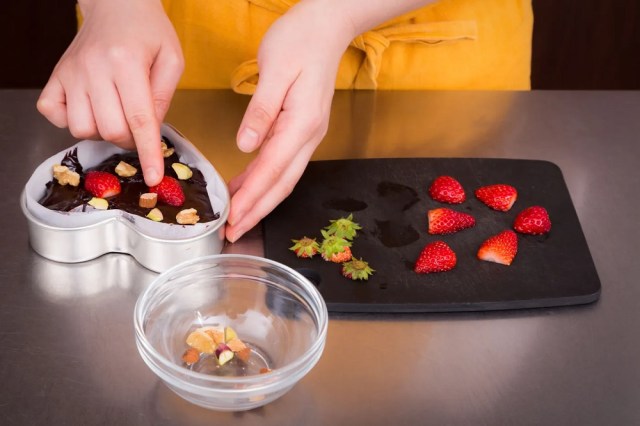
Survey breaks down amounts of honmei, tomo, and kazoku chocolate.
Valentine’s Day cards may not be a thing in Japan, but Valentine’s Day chocolate very much is, with the local tradition being for girls to give chocolate to boys they like. So naturally Japanese confectionery maker Yuraku Seika is curious to hear about people’s Valentine’s Day memories, and so they recently conducted a survey of 500 people (250 men and 250 women) between the ages of 20 and 59, asking them to think back to their student days and recall their sweet memories of February 14 sweets.
Starting with the women, 94.4 percent said that they’d given someone Valentine’s Day chocolate during their schoolgirl days. On the other side of the exchange, 84.4 percent of the guys said they’d received chocolate. That doesn’t mean that almost everyone was giving/getting chocolate every year, though. 58.8 percent of the women said that there was at least one year when they didn’t give chocolate to anyone, and 62 percent of the guys had at least one choco-less Valentine’s Day when they didn’t receive even a single piece.
Still, the high percentages of people who’d been part of a chocolate exchange suggests there’s some basis in reality for all those anime episodes revolving around them. But what of another common anime trope: The super-popular guy who gets chocolate from a gaggle of female admirers?
26.4 percent of the male survey participants described themselves as having been “popular with girls” during their student days, and out of that group, the average for the most chocolate they received on a single Valentine’s Day was 8.3 pieces. That’s notably higher than the 5.8 pieces average for most single-year chocolate among the male participants as a whole, and 8 percent of the participants said they received 13.2 pieces or more in their biggest Valentine’s Day haul.
However, that doesn’t mean that the average boy, on his best day, had his pick between five or six potential new girlfriends. That best average of 5.8 pieces statistically consisted of just 1.7 pieces of honmei choco, as Valentine’s Day chocolate given to express romantic feelings is called. The rest of it was 2.7 pieces of tomo choco (chocolate from platonic friends), 0.9 pieces of kazoku choco (chocolate from family members), and 0.5 pieces of “other choco,” so the data suggests that most guys were getting chocolate from, at most, two romantic admirers.
As for the women, the average for most chocolate given in a single year was 13.1 pieces, divided into 0.8 pieces of honmei choco. 10.1 for tomo choco, 1.2 fr Kazoku choco, and 1.0 for other choco. Comparing that to the male responses, we see that honmei choco is pretty much given to, at most, only one guy per year. Also, the girls were giving out a lot more tomo chocolate than the guys were receiving, suggesting that gap is a result of an increasing trend of Japanese schoolgirls giving Valentine’s Day chocolate not only to male objects of affection and platonic friends, but also to their female pals.
While Valentine’s isn’t exclusively celebrated by teens in Japan, the country does strongly associate the day with middle school and high school students, and 57.4 percent of the survey’s participants said that Valentine’s Day was more fun when they were in school than it is as an adult. However, 60 percent of them also said that they’d be happy to receive Valentine’s Day chocolate even now, no matter what their age is, so hopefully their romantic partners, friends, and family will pick up on their chocolate aspirations and give them a sweet surprise this year.
Source: PR Times
Top image © SoraNews24
Insert images: Pakutaso (1, 2)
● Want to hear about SoraNews24’s latest articles as soon as they’re published? Follow us on Facebook and Twitter!
[ Read in Japanese ]



 Survey shows Japanese women would love to be getting some chocolate on Valentine’s Day too
Survey shows Japanese women would love to be getting some chocolate on Valentine’s Day too This Valentine’s Day, tell him you don’t love him with Japanese women’s “chocolate maggot” recipe
This Valentine’s Day, tell him you don’t love him with Japanese women’s “chocolate maggot” recipe Survey reveals Japanese men really want home-made chocolate, but are women willing to make it?
Survey reveals Japanese men really want home-made chocolate, but are women willing to make it? Only one demographic in survey is happy about Japan’s workplace obligation Valentine’s chocolate
Only one demographic in survey is happy about Japan’s workplace obligation Valentine’s chocolate In Japan, women give “obligation chocolate” on Valentine’s Day, but do guys even want it?
In Japan, women give “obligation chocolate” on Valentine’s Day, but do guys even want it? Foreigner’s request for help in Tokyo makes us sad for the state of society
Foreigner’s request for help in Tokyo makes us sad for the state of society Japanese city loses residents’ personal data, which was on paper being transported on a windy day
Japanese city loses residents’ personal data, which was on paper being transported on a windy day Seaside scenery, history, and so many desserts on Yokohama’s Akai Kutsu【Japan Loop Buses】
Seaside scenery, history, and so many desserts on Yokohama’s Akai Kutsu【Japan Loop Buses】 Red light district sushi restaurant in Tokyo shows us just how wrong we were about it
Red light district sushi restaurant in Tokyo shows us just how wrong we were about it Harajuku Station’s beautiful old wooden building is set to return, with a new complex around it
Harajuku Station’s beautiful old wooden building is set to return, with a new complex around it Should you add tartar sauce to Japanese curry rice? CoCo Ichi makes diners an unusual offer
Should you add tartar sauce to Japanese curry rice? CoCo Ichi makes diners an unusual offer Smash Bros. director Sakurai stabs Kirby in the face, has delicious justification for it
Smash Bros. director Sakurai stabs Kirby in the face, has delicious justification for it Historical figures get manga makeovers from artists of Spy x Family, My Hero Academia and more
Historical figures get manga makeovers from artists of Spy x Family, My Hero Academia and more French Fries Bread in Tokyo’s Shibuya becomes a hit on social media
French Fries Bread in Tokyo’s Shibuya becomes a hit on social media Mt. Koya planning to instate visitor’s tax to cope with huge tourist numbers
Mt. Koya planning to instate visitor’s tax to cope with huge tourist numbers McDonald’s new Happy Meals offer up cute and practical Sanrio lifestyle goods
McDonald’s new Happy Meals offer up cute and practical Sanrio lifestyle goods Japanese ramen restaurants under pressure from new yen banknotes
Japanese ramen restaurants under pressure from new yen banknotes Studio Ghibli releases new action figures featuring Nausicaä of the Valley of the Wind characters
Studio Ghibli releases new action figures featuring Nausicaä of the Valley of the Wind characters New private rooms on Tokaido Shinkansen change the way we travel from Tokyo to Kyoto
New private rooms on Tokaido Shinkansen change the way we travel from Tokyo to Kyoto Tokyo Tsukiji fish market site to be redeveloped with 50,000-seat stadium, hotel, shopping center
Tokyo Tsukiji fish market site to be redeveloped with 50,000-seat stadium, hotel, shopping center Beautiful Ghibli sealing wax kits let you create accessories and elegant letter decorations【Pics】
Beautiful Ghibli sealing wax kits let you create accessories and elegant letter decorations【Pics】 Studio Ghibli releases Kiki’s Delivery Service chocolate cake pouches in Japan
Studio Ghibli releases Kiki’s Delivery Service chocolate cake pouches in Japan New definition of “Japanese whiskey” goes into effect to prevent fakes from fooling overseas buyers
New definition of “Japanese whiskey” goes into effect to prevent fakes from fooling overseas buyers Our Japanese reporter visits Costco in the U.S., finds super American and very Japanese things
Our Japanese reporter visits Costco in the U.S., finds super American and very Japanese things All-you-can-drink Starbucks and amazing views part of Tokyo’s new 170 meter-high sky lounge
All-you-can-drink Starbucks and amazing views part of Tokyo’s new 170 meter-high sky lounge More foreign tourists than ever before in history visited Japan last month
More foreign tourists than ever before in history visited Japan last month New Pokémon cakes let you eat your way through Pikachu and all the Eevee evolutions
New Pokémon cakes let you eat your way through Pikachu and all the Eevee evolutions Disney princesses get official manga makeovers for Manga Princess Cafe opening in Tokyo
Disney princesses get official manga makeovers for Manga Princess Cafe opening in Tokyo Sales of Japan’s most convenient train ticket/shopping payment cards suspended indefinitely
Sales of Japan’s most convenient train ticket/shopping payment cards suspended indefinitely Sold-out Studio Ghibli desktop humidifiers are back so Totoro can help you through the dry season
Sold-out Studio Ghibli desktop humidifiers are back so Totoro can help you through the dry season Japanese government to make first change to romanization spelling rules since the 1950s
Japanese government to make first change to romanization spelling rules since the 1950s Ghibli founders Toshio Suzuki and Hayao Miyazaki contribute to Japanese whisky Totoro label design
Ghibli founders Toshio Suzuki and Hayao Miyazaki contribute to Japanese whisky Totoro label design Doraemon found buried at sea as scene from 1993 anime becomes real life【Photos】
Doraemon found buried at sea as scene from 1993 anime becomes real life【Photos】 Tokyo’s most famous Starbucks is closed
Tokyo’s most famous Starbucks is closed One Piece characters’ nationalities revealed, but fans have mixed opinions
One Piece characters’ nationalities revealed, but fans have mixed opinions We asked a Uniqlo employee what four things we should buy and their suggestions didn’t disappoint
We asked a Uniqlo employee what four things we should buy and their suggestions didn’t disappoint Princesses, fruits, and blacksmiths: Study reveals the 30 most unusual family names in Japan
Princesses, fruits, and blacksmiths: Study reveals the 30 most unusual family names in Japan Giri obligation chocolates seen as power harassment, more Japanese companies ban practice
Giri obligation chocolates seen as power harassment, more Japanese companies ban practice Tokyo opens entire store dedicated to helping women buy obligation chocolate for Valentine’s
Tokyo opens entire store dedicated to helping women buy obligation chocolate for Valentine’s Japanese women explain why they give “obligation chocolate” to male coworkers on Valentine’s Day
Japanese women explain why they give “obligation chocolate” to male coworkers on Valentine’s Day Why you probably won’t get home-made Valentine chocolate and love confession from a Japanese girl
Why you probably won’t get home-made Valentine chocolate and love confession from a Japanese girl Japanese girls reveal who they really give most Valentine’s chocolates to, and it’s not boys
Japanese girls reveal who they really give most Valentine’s chocolates to, and it’s not boys Shabani the gorilla is so handsome he’ll be appearing on sweets in Japan this Valentine’s Day
Shabani the gorilla is so handsome he’ll be appearing on sweets in Japan this Valentine’s Day Is the coronavirus going to kill Japan’s obligation chocolate Valentine’s Day custom?
Is the coronavirus going to kill Japan’s obligation chocolate Valentine’s Day custom? Godiva runs full-page ad asking Japanese women to stop buying so much Valentine’s chocolate
Godiva runs full-page ad asking Japanese women to stop buying so much Valentine’s chocolate Barely half of Japanese men in survey will give thank-you gift to women for Valentine’s chocolate
Barely half of Japanese men in survey will give thank-you gift to women for Valentine’s chocolate Don’t bother, ladies: Survey reveals most Japanese guys don’t want your Valentine’s chocolate
Don’t bother, ladies: Survey reveals most Japanese guys don’t want your Valentine’s chocolate What will 2021 mean for Valentine’s Day in Japan? Survey asks teens their chocolate plans
What will 2021 mean for Valentine’s Day in Japan? Survey asks teens their chocolate plans Happy Virus-times! How has the pandemic affected Japan’s chocolate budget for Valentine’s Day?
Happy Virus-times! How has the pandemic affected Japan’s chocolate budget for Valentine’s Day? Japanese dentistry student makes chocolate teeth for Valentine’s Day
Japanese dentistry student makes chocolate teeth for Valentine’s Day Han Solo and other Valentine’s Day chocolates we weren’t lucky enough to get
Han Solo and other Valentine’s Day chocolates we weren’t lucky enough to get Melt your lover’s heart with these limited edition Valentine’s Day Krispy Kreme donuts
Melt your lover’s heart with these limited edition Valentine’s Day Krispy Kreme donuts
Leave a Reply